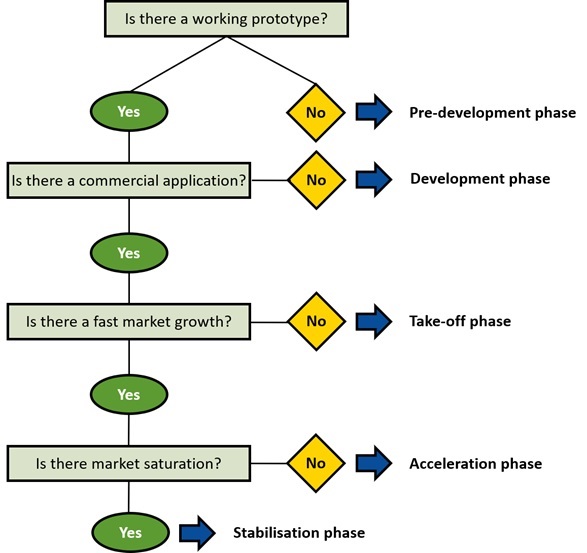 The European Union realises that innovation is vital to maintain competitiveness in the global economy. Therefore, the EU is investing in policies and programmes that support the development of innovation to better convert research into improved goods, services or processes for the market. Some examples, Europe supports the development of innovation in priority areas through the H2020 programme and fosters the commercialisation of innovation through Public Procurement and Demand-Side Policies. It also monitors innovation performance through the European Innovation Scoreboards at a national and regional levels to identify where policy updates may be required. At a UK level, the UK Research and Innovation body brings together 7 Research Councils, Innovate UK and Research England to create the best possible environment for innovation to flourish. Innovation is also supported at a regional level. In North Yorkshire for example, the Biorenewables Development Centre offers support to local SMEs for the scale-up of their innovation through ERDF funding.
The European Union realises that innovation is vital to maintain competitiveness in the global economy. Therefore, the EU is investing in policies and programmes that support the development of innovation to better convert research into improved goods, services or processes for the market. Some examples, Europe supports the development of innovation in priority areas through the H2020 programme and fosters the commercialisation of innovation through Public Procurement and Demand-Side Policies. It also monitors innovation performance through the European Innovation Scoreboards at a national and regional levels to identify where policy updates may be required. At a UK level, the UK Research and Innovation body brings together 7 Research Councils, Innovate UK and Research England to create the best possible environment for innovation to flourish. Innovation is also supported at a regional level. In North Yorkshire for example, the Biorenewables Development Centre offers support to local SMEs for the scale-up of their innovation through ERDF funding.
With multiple policies and innovation support programmes across different EU countries and regions, it may be necessary to take a step back and ask ourselves ‘what does the term innovation really mean? Innovation has been described in many ways; for example, as a new creation of economic significance which can be formed by new elements or a combination of existing elements. According to the European Commission, innovation is the use of new ideas, products or methods where they have not been used before.
However, despite all the initiatives supporting innovation, not all promising ideas reach the market. What characterises a successful innovation then? Are there any red flags that indicate a potential innovation’s failure?
In the 80’s many people asked themselves these very same questions attempting to understand the competitive advantage that Japan had won over the US and Europe. Experts realised that the success of a specific idea depended on many factors which, among others, include the organisations working around a specific innovation, how these organisations interact with each other and the policies surrounding the innovation which may help drive or hinder the idea. Experts also realised that to be able to understand and even influence an innovation process, it was necessary to study all the factors surrounding an innovation, later labelled the Innovation System. Chris Freeman, an academic at the University of Sussex studying innovation, defined ‘Innovation Systems’ as the network of institutions in the public and private sectors whose activities and interactions initiate, import, modify and diffuse new technologies. The innovation system approach diffused rapidly as it gave policy makers the necessary tools to compare different innovation support methods.
Innovation systems can be analysed to understand its strengths and potential red flags. Marko Hekkert from the University of Utrecht put together a guide to help policy makers with the analysis of technology innovation systems. Prior to the analysis, it is important to define the boundaries of the innovation system including whether the object of analysis will be a product/technology or knowledge field, or a region or nation. This allows to differentiate between several types of innovation systems such as National or Regional Innovation Systems, which aim to understand a nation or region’s innovation performance; a Sectoral Innovation System which focuses on the assessment of a specific industrial sector; and Technological Innovation Systems which circle around certain technological development.
According to Hekkert’s guide, the analytical process starts with a structural analysis. This exercise should provide info about the elements that comprise the system, including key organisations, the relations among them and the rules that shape these interactions. Any organisation that interacts with the innovation under study is known as an actor of the innovation system. Actors may include government bodies, knowledge institutes, educational organisations and industry among others. Similarly, the rules that shape interactions between actors are known as institutions of the innovation system. Institutions can be classified as formal, those designed and enforced by an authority, and informal which are shaped by human interactions (i.e. social norms, beliefs).
If we look at an innovation system as a set of building blocks that you would like to use to construct something, defining the boundaries of your innovation would be equivalent to decide what you are going to build, its size and the purpose of the construction. Similarly, understanding the structure of your system would be equivalent to get familiarised with the type of blocks you have, the compatibilities between the different blocks and the rules you are going to follow for your construction.
It is important to remember that the structural analysis of the innovation system is not enough on its own to fully comprehend the complexity of an innovation system, as systems with similar structures may function in completely different ways if, for example, they are based in different countries where different social norms or beliefs apply. In consequence, an analysis of the activities carried out by the actors of the system is also necessary. In an innovation system, these activities are generally called functions. So, what are the key functions of an innovation system?
Marko Hekkert defined seven main functions for the analysis of a Technological Innovation System. These functions include the role of entrepreneurs (1), who take ideas into actions and therefore reduce the uncertainty about a specific technology. Other key functions of an innovation system are knowledge development (2) and diffusion (3); understanding the key research and development efforts being made towards a specific innovation, as well as how the generated info flows between the actors involved is very important. The functions of guidance on search (4) and resource mobilisation (5) focus on resources; the former includes the activities in place (i.e. incentives and pressures) to guide the use of resources towards a common direction; the later analyses the potential of your innovation to mobilise a series of resources. The last two functions, market formation (6) and counteracting resistance to change (7), are related to the type of market available for the innovation under study, and the mechanisms in place for the innovation to be legitimated and accepted by consumers respectively.
The structural and functional analyses allowed us to understand ‘how’ the system works. Now we need to go a step further to learn how well the system functions. How do we assess the ‘how well’?
We need to pay attention to the influence that each function has over the other functions, to understand whether functions reinforce each other, creating a positive or virtuous cycle loop, or on the contrary some functions weaken the impact of other functions. It is important to realise that the stage of development of an innovation system will affect the dynamics of the system, and therefore efforts should also be put towards determining the stage of development of the innovation. In his guide, Marko Hekkert provided some diagnostic questions to help with this. For example, is there a working prototype? This will help establishing whether the innovation is at a ‘pre-development stage’ or has, instead, reached the ‘development phase’. The question is there commercial application? would help determining whether the transition to ‘take-off phase’ has occurred. Is there a fast-growing market? would let us know if the innovation has reached the ‘acceleration stage’.
At the formative or developmental phase all functions can be critical, being entrepreneurial activities the most important function at this stage. In later stages such as the take-off phase, entrepreneurial activities are still critical, but their purpose has shifted from gathering info about the technology to legitimation of the innovation. In the take-off phase, however, knowledge functions are not as relevant anymore as plenty of information about the innovation has been gathered in previous phases. Finally, during the acceleration phase of the innovation, the formation of a market for the innovation becomes the priority function.

By understanding ‘how well’ a system works, we are making ourselves aware of any functions that may be hampering the development of the innovation. This type of knowledge about a system is critical as it can be used to remedy the problem hindering the innovation’s development. The identified hampering function is generally associated to a structural problem, and therefore it becomes necessary to find out which structural component is the source of the issue.
Finally, it is important to understand whether the relevant policies in place are capable of tackling the structural and functional barriers identified, and to achieve this it is necessary to clearly understand the goal behind a specific policy. This is, the expected end result being brought about by the application of the policy.
To conclude, support for innovation is key to maintain the European competitiveness in the global economy. However, not every single policiy or support programme may be adequate to promote the development of a specific innovation. Delivering policies capable of effective innovation support require a deep understanding of the targeted innovation and the factors surrounding it (the Innovation System). Innovation systems can be analysed, and the results of this analysis can be particularly helpful for policy makers to understand where the key barriers are in regard to the development of a specific innovation. Thus, the results of the analysis will provide policy makers with the right tools to deliver bespoke and effective policies to support a specific innovation.
Author
Dr Andrea Muñoz Garcia (NNFCC)
Source
NNFCC, press release, 2019-06-24.
Supplier
Biorenewables Development Centre (BDC)
European Union
Horizon 2020
Innovate UK
Research England
University of Sussex
University of Utrecht
Share
Renewable Carbon News – Daily Newsletter
Subscribe to our daily email newsletter – the world's leading newsletter on renewable materials and chemicals










